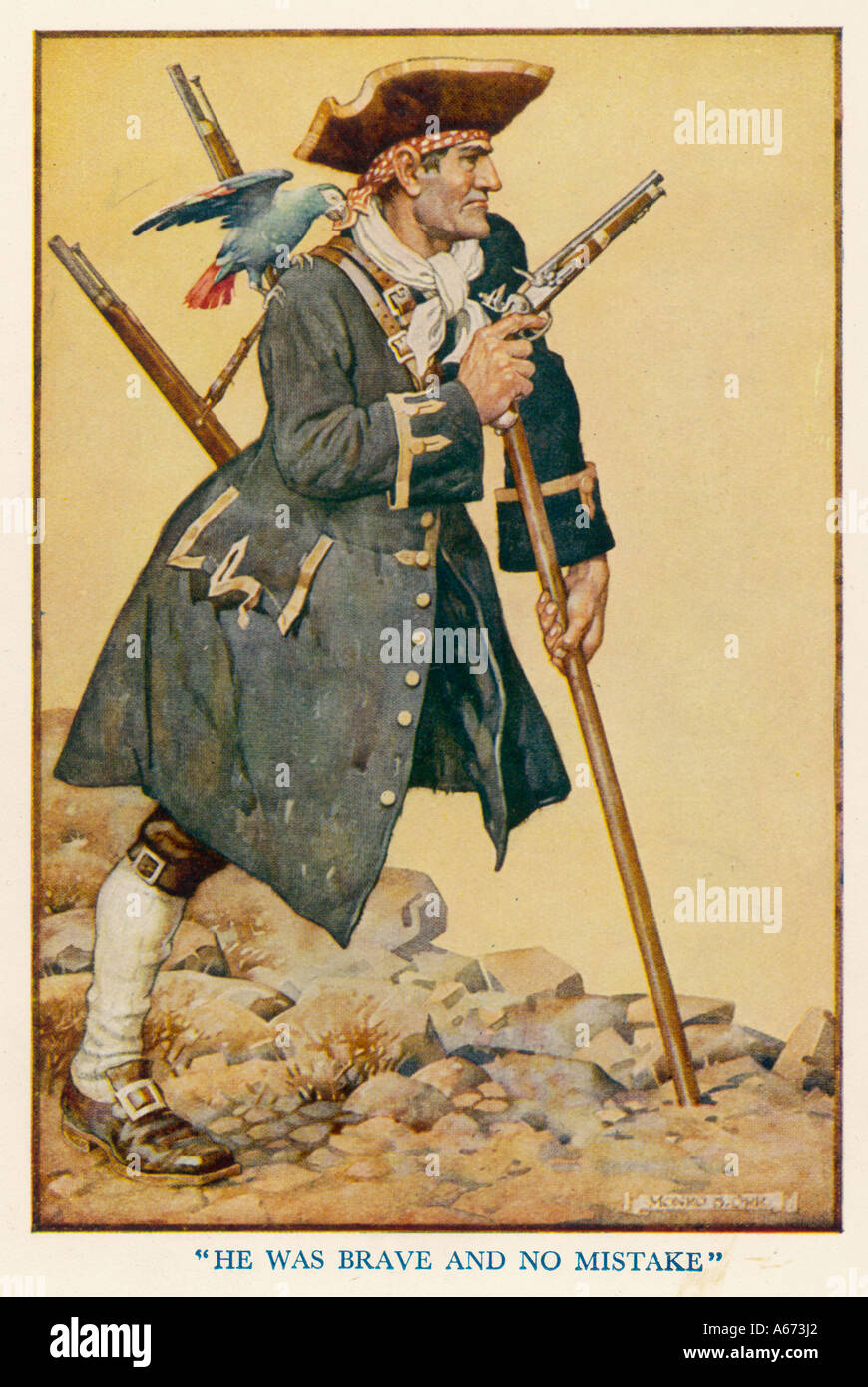Who was Long John Silver, and why does his legacy continue to captivate audiences even today? This enigmatic pirate from Robert Louis Stevenson's Treasure Island has become a cultural icon, embodying both the allure and danger of life on the high seas. His complex character transcends the boundaries of fiction, influencing countless adaptations and interpretations in literature, film, and popular culture. From his cunning nature to his infamous pet parrot, Captain Flint, Long John Silver remains one of the most fascinating figures in literary history.
Long John Silver first appeared in Stevenson’s 1883 novel Treasure Island, where he is portrayed as the ship's quartermaster under the notorious Captain Flint. Despite being physically disabled—Silver uses a crutch due to his missing leg—he commands respect through sheer charisma and strategic brilliance. His role as both ally and adversary to protagonist Jim Hawkins adds depth to the narrative, making him far more than just a stereotypical villain. Over time, Silver’s character evolved beyond the pages of Stevenson’s work, inspiring numerous sequels, prequels, and reinterpretations across various media platforms.
| Bio Data & Personal Information | Career & Professional Information |
|---|---|
| Name: Long John Silver | Occupation: Pirate, Ship's Quartermaster |
| Birthplace: Unknown (likely England) | Ship Affiliation: HMS Walrus (under Captain Flint) |
| Physical Characteristics: Missing left leg, uses a crutch | Notable Skills: Leadership, negotiation, survival tactics |
| Pet: Parrot named Captain Flint | Famous Quote: Them that die'll be dead; them that don't, won't. |
| Nickname(s): Barbecue, Sea-Cook | Legacy: Iconic fictional pirate in literature and media |
| For more information, visit Wikipedia | |
In the sequel Return to Treasure Island (1954), Silver attempts to rescue his friend Jim from rival pirates while pursuing additional treasure. This film expands on Silver’s backstory, revealing layers of loyalty and betrayal that define his character. While some may view him purely as a villain, others see shades of gray—a man driven by ambition yet capable of forming genuine connections. Such complexity makes Silver relatable despite his morally ambiguous actions.
Modern interpretations often explore Silver’s origins before Treasure Island. For instance, the television series Black Sails reimagines him as a young sailor named John Silver, highlighting his rise within the pirate community. In this adaptation, viewers witness his transformation into the charismatic leader known from Stevenson’s novel. Although initially portrayed as an inept cook aboard the ship, Silver quickly proves himself indispensable through intelligence and charm. Post-Black Sails, fans have speculated extensively about what happens next for the character, fueling ongoing interest in his story.
Beyond traditional narratives, Silver appears in comic books like Pipeline Comics' Long John Silver V1: 'Lady Vivian Hastings.' Here, he becomes entangled in a plot involving revenge against Lady Hastings’ husband, showcasing versatility in how authors reimagine his adventures. These diverse portrayals ensure that Silver remains relevant across generations, appealing to readers and viewers alike who crave tales of adventure and intrigue.
The enduring appeal of Long John Silver lies not only in his memorable traits but also in the themes associated with his character. As a symbol of rebellion against societal norms, he embodies freedom and independence—a universal aspiration shared by many. Furthermore, his ability to navigate treacherous waters, both literally and metaphorically, resonates deeply with those fascinated by risk-taking and exploration.
One cannot discuss Silver without mentioning his iconic pet parrot, Captain Flint. Perched on his shoulder, the bird serves as both companion and constant reminder of his former captain’s influence. Their relationship underscores Silver’s duality: part ruthless pirate, part sentimental human being. Together, they represent the paradoxical nature of piracy itself—simultaneously thrilling and perilous.
As evidenced by merchandise such as the Long John Silver's Pirate Tee, available in limited quantities, Silver continues to inspire consumer products catering to enthusiasts worldwide. Each piece celebrates his legendary status, ensuring his place in pop culture history. Moreover, these items underscore the global fascination with all things piratical, proving that stories rooted in imagination can transcend time and space.
From novels to films, television shows to comics, Long John Silver’s journey illustrates the power of storytelling to create lasting impressions. His character challenges conventional notions of heroism and villainy, inviting audiences to question their own perceptions of morality. By examining his motivations and decisions, we gain insight into the complexities of human nature itself.
Ultimately, Long John Silver represents much more than a fictional pirate. He stands as a testament to creativity and innovation, reminding us why great stories endure long after their initial publication. Whether viewed through the lens of classic literature or contemporary adaptations, Silver’s legacy endures, captivating new generations with promises of adventure and discovery.
Through careful examination of his exploits and evolution over time, it becomes clear that Long John Silver will remain a beloved figure for years to come. His ability to adapt to changing times while retaining core elements of his persona ensures his continued relevance in our collective consciousness. As long as there are storytellers eager to craft tales of daring escapades, Long John Silver will sail confidently into the future, forever etched in the annals of literary greatness.



